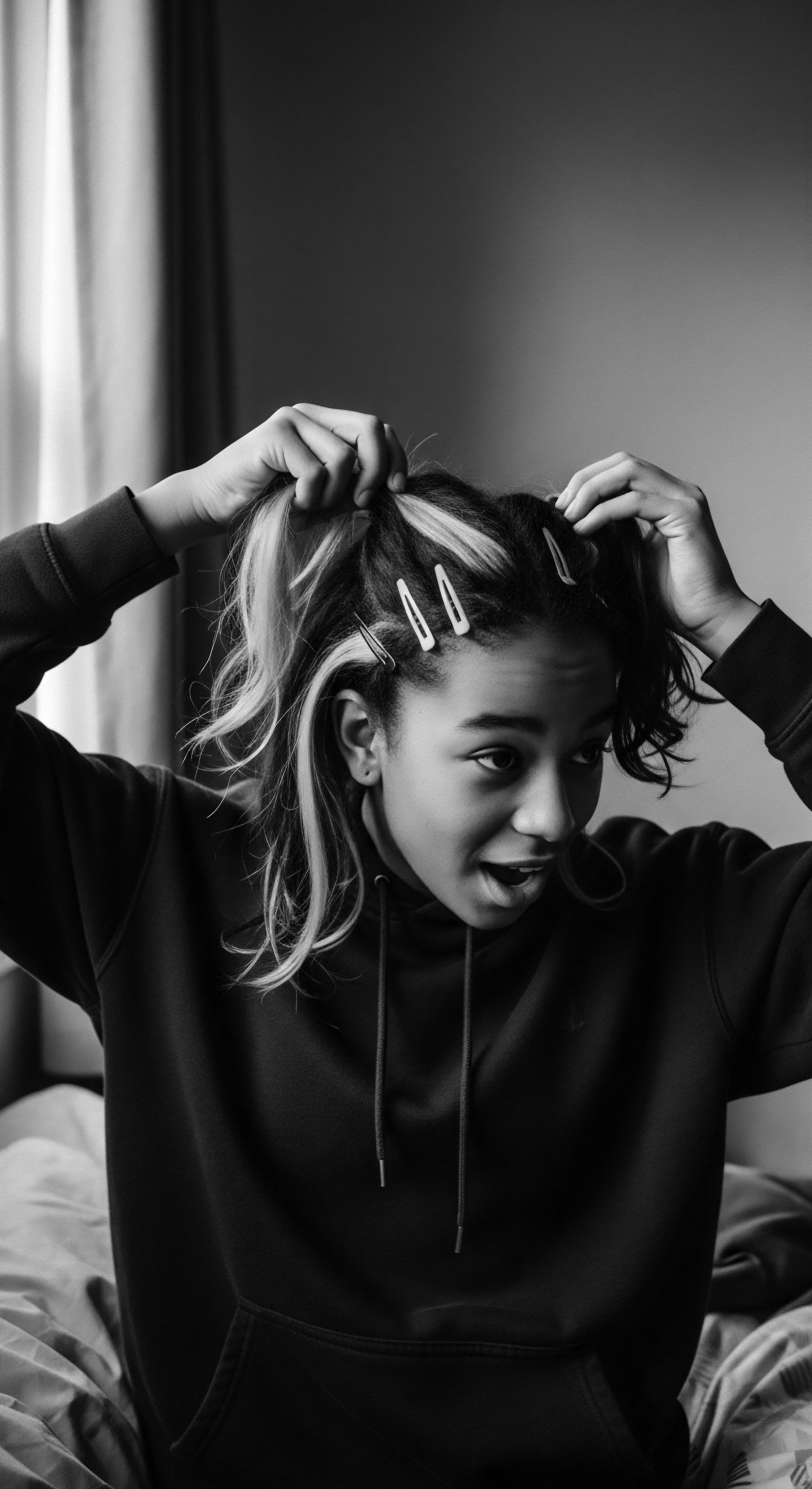
Fundamentals
The concept of Indigenous Hair Practices extends far beyond mere aesthetic choices; it represents a profound expression of identity, communal connection, and spiritual reverence, particularly for those with Textured Hair Heritage. At its core, this designation encompasses the diverse and deeply rooted traditions of hair care, styling, and adornment passed down through generations within various Indigenous communities globally. These practices are not simply routines for physical appearance; they are living archives of ancestral wisdom, often intertwined with cosmological beliefs, social structures, and the natural environment. Understanding this term requires acknowledging hair as a vital component of one’s being, a sacred extension of the self that carries the stories of lineage and the echoes of collective experience.
From the earliest known human societies, hair has served as a powerful communicator, signaling age, marital status, social standing, tribal affiliation, and even spiritual devotion. For communities across Africa and the diaspora, where textured hair reigns supreme in its myriad forms, these practices held unparalleled significance. Ancient African societies, for instance, viewed hair as the most elevated part of the body, a conduit to the divine and the ancestors.
This belief system guided elaborate grooming rituals, transforming hair care into a ceremonial act of profound meaning. The careful tending of coils, kinks, and curls became a tangible link to heritage, a visible affirmation of belonging and continuity.
Indigenous Hair Practices embody ancestral wisdom, treating hair not just as a physical attribute, but as a sacred extension of identity and community, especially within textured hair heritage.
The initial understanding of Indigenous Hair Practices, therefore, grounds itself in these ancient principles. It refers to the organic, holistic approaches to hair health and beauty that emerged from specific cultural contexts, utilizing readily available natural resources. This includes the use of indigenous plants, clays, and oils for cleansing, moisturizing, and styling, often accompanied by intricate braiding, twisting, and locking techniques.
These methods were developed over millennia, born from an intimate knowledge of hair’s elemental biology and its unique needs within diverse climates and environments. The wisdom embedded in these practices predates modern cosmetic science, offering a timeless testament to human ingenuity and a deep respect for the natural world.
For those new to the discourse of textured hair care, particularly within Black and mixed-race communities, grasping the fundamental meaning of Indigenous Hair Practices begins with recognizing their foundational role. These are the origins of care, the original formulations, and the authentic expressions of hair artistry that shaped identity long before colonial influences sought to redefine beauty. The knowledge passed down through oral traditions, observation, and communal participation formed the bedrock of hair wellness, ensuring that each strand was not only cared for physically but also honored culturally and spiritually.

Ancient Roots of Hair Reverence
The earliest expressions of Indigenous Hair Practices across African civilizations illustrate a profound connection between hair and life itself. In pre-colonial African societies, hair was a symbol of one’s identity and status. Hairstyles conveyed information about geographic origin, marital status, age, ethnic identity, religion, wealth, and social rank.
For instance, women in some cultures wore braids or cornrows when single and adopted loose or covered styles upon marriage. This communicative aspect of hair underscores its deep integration into the social fabric.
The Yoruba people of Nigeria, for example, considered hair as important as the head, believing that proper care brought good fortune. They crafted intricate hairstyles that symbolized community roles. In Yoruba cosmology, hair acts as a medium of spiritual energy, connecting individuals to ancestors and deities.
Similarly, in ancient Egypt, hair was not merely an adornment; it was a visible symbol of hierarchy and divinity. Elite members of society often wore elaborate wigs adorned with precious materials, signifying wealth and religious devotion.
These early practices were holistic, involving careful washing, combing, oiling, braiding, or twisting, and decorating the hair with cloth, beads, or shells. Such rituals were often communal, serving as opportunities for social bonding among family and friends. This tradition of shared care and storytelling remains a significant aspect of textured hair communities today, echoing the communal spirit of ancestral practices.
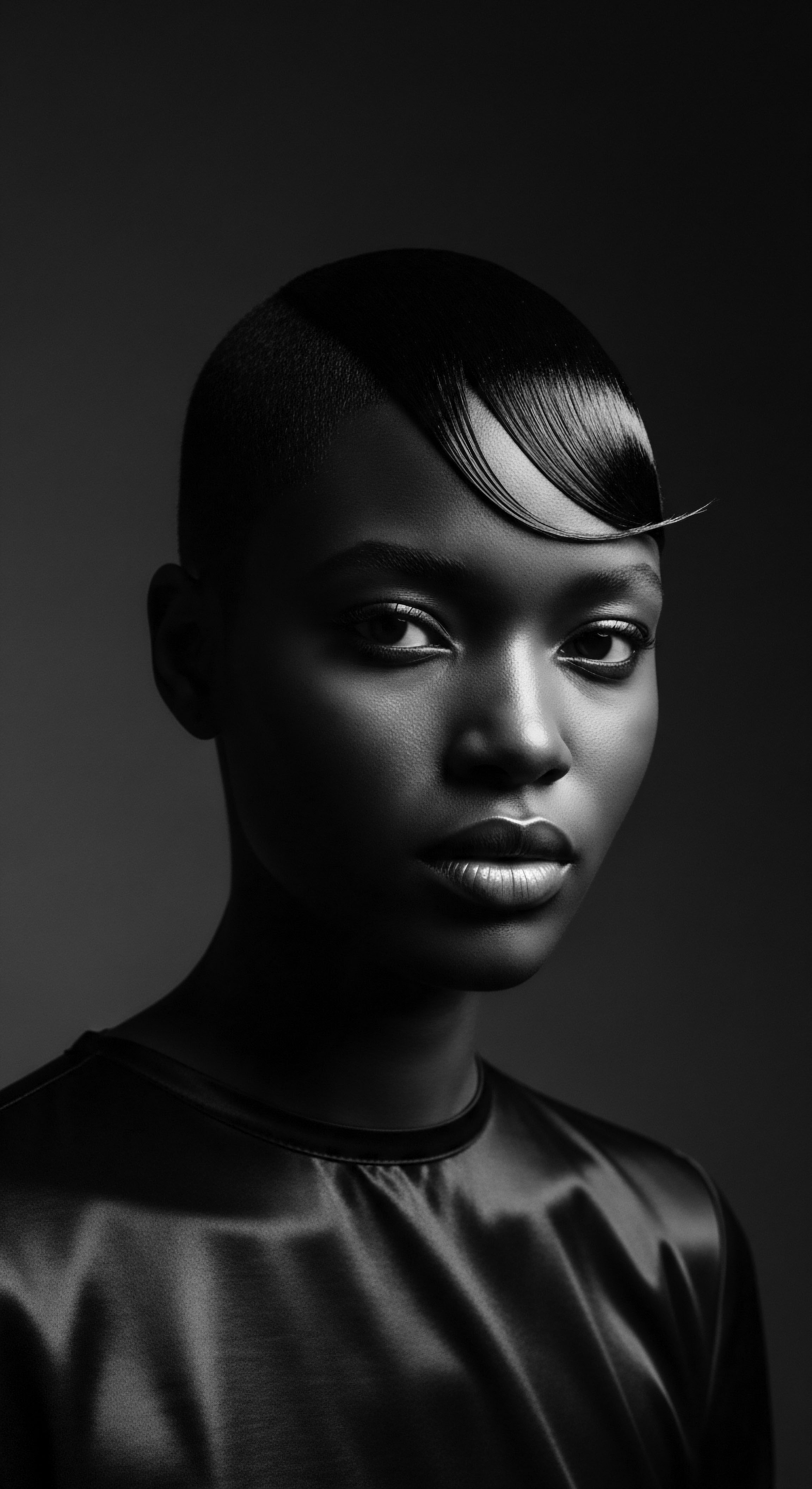
Intermediate
Moving beyond the foundational understanding, the intermediate meaning of Indigenous Hair Practices delves into the dynamic ways these heritage practices have been transmitted, adapted, and sustained across generations, particularly within the vast and varied landscapes of textured hair experiences. This layer of comprehension explores how the initial, elemental approaches to hair care evolved into sophisticated rituals and styling traditions, continuously reshaped by migration, interaction, and resistance. It is a testament to the enduring spirit of communities that their hair traditions persisted despite profound historical disruptions.
The practical application of Indigenous Hair Practices for textured hair has always centered on working harmoniously with the hair’s inherent structure. Coiled, kinky, and curly strands, with their unique elasticity and tendency towards dryness, require specific methods of moisture retention, detangling, and protection. Ancestral knowledge, accumulated through generations of observation and experimentation, provided effective solutions long before the advent of modern hair science. This traditional wisdom often involved the diligent use of natural emollients, humectants, and botanical extracts to nourish the hair and scalp.
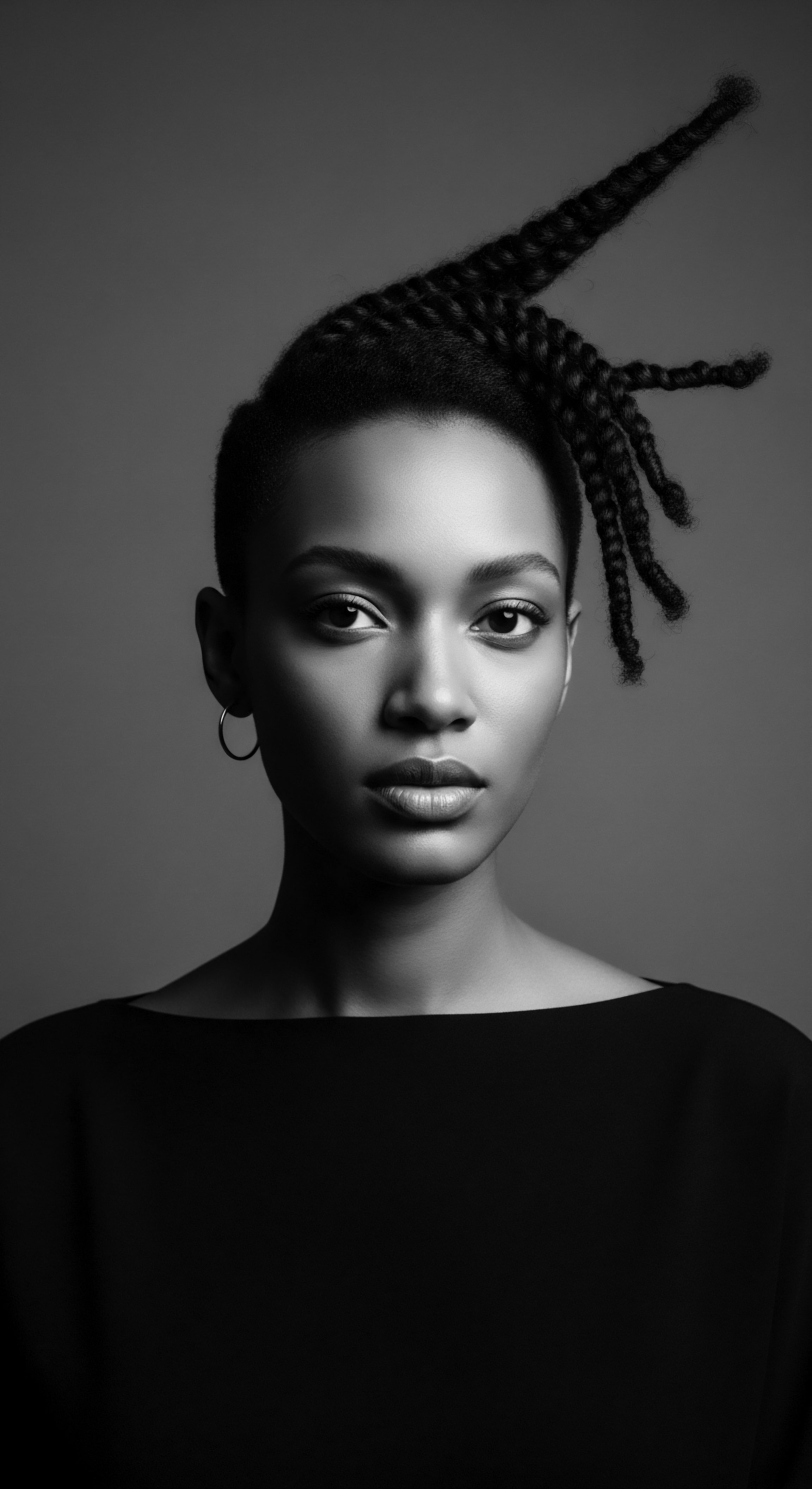
The Tender Thread of Continuity
The continuity of Indigenous Hair Practices is vividly apparent in the communal rituals surrounding hair care. In many African cultures, braiding hair was not merely a styling technique but a communal activity. Mothers, daughters, and friends would gather, strengthening bonds while preserving cultural identity through shared moments of care. This communal aspect fostered not only physical well-being but also psychological resilience and a deep sense of belonging.
Consider the widespread tradition of Hair Oiling. Across diverse African communities, and later within the diaspora, natural oils and plant-based ingredients were regularly applied to hair and scalp. Shea butter, coconut oil, aloe vera, and various indigenous plant extracts have long been used to nourish and protect textured hair.
These practices were rooted in an understanding of hair’s needs in specific climates, providing moisture and a shield against environmental stressors. The wisdom of these natural remedies continues to be celebrated today, with many embracing these traditional approaches for scalp health and moisture.
The adaptation of these practices is equally compelling. When African peoples were forcibly removed from their homelands during the transatlantic slave trade, they were stripped of their hair tools and accessories, often having their hair shaved as an act of dehumanization. Despite this systematic oppression, the resilience of Indigenous Hair Practices shone through. Enslaved Africans found ways to preserve their hair traditions, using whatever limited resources were available.
They would braid each other’s hair on Sundays, using improvised greases like butter or goose grease. This act of maintaining hair, even under extreme duress, became a quiet yet potent form of resistance, a refusal to surrender their identity.
Indigenous Hair Practices for textured hair persist through generations, adapting ancient wisdom into enduring rituals that prioritize moisture, protection, and communal connection, even in the face of historical adversity.
The ingenuity of these adaptations is particularly striking in the historical use of hairstyles for communication and survival. In Colombia, during the era of slavery, enslaved women ingeniously used their cornrows to create maps and convey escape routes to freedom. Specific patterns in the braids would indicate paths, while others might signal meeting times or even hide seeds for sustenance during escape. This demonstrates how hair practices, deeply embedded in cultural heritage, became vital tools for survival and liberation, transcending their purely aesthetic or hygienic functions.
| Traditional Practice/Ingredient Shea Butter (West Africa) |
| Ancestral Purpose (Heritage Context) Deep conditioning, scalp health, protection from sun and elements. |
| Modern Application/Scientific Link Emollient in conditioners, moisturizers, and hair masks for natural hair; rich in fatty acids and vitamins. |
| Traditional Practice/Ingredient Hair Threading (Yoruba, Nigeria) |
| Ancestral Purpose (Heritage Context) Protective styling, hair stretching, length retention, spiritual significance. |
| Modern Application/Scientific Link Non-heat styling method for stretching coils, minimizing breakage, and creating sleek looks. |
| Traditional Practice/Ingredient Otjize Paste (Himba, Namibia) |
| Ancestral Purpose (Heritage Context) Moisturizing, sun protection, insect repellent, social/marital status marker. |
| Modern Application/Scientific Link Inspiration for natural hair protective formulations combining oils, clays, and pigments; understanding natural sunscreens. |
| Traditional Practice/Ingredient Communal Braiding |
| Ancestral Purpose (Heritage Context) Social bonding, knowledge transfer, identity affirmation, creation of complex styles. |
| Modern Application/Scientific Link Salon environments replicating community, shared styling experiences, preservation of cultural techniques. |
| Traditional Practice/Ingredient These practices underscore the enduring legacy of ancestral knowledge, providing timeless solutions for textured hair care. |
The adaptation of Indigenous Hair Practices also manifests in the names and meanings of styles across the diaspora. The term “cornrows,” for example, originated in colonial America, named after the agricultural fields where enslaved people labored. In the Caribbean, they were sometimes called “canerows,” reflecting their association with sugarcane fields.
These linguistic shifts highlight the ongoing dialogue between ancestral heritage and the realities of new environments, where traditional practices took on new layers of meaning and resilience. The styles themselves, like the Afro, became powerful symbols of resistance and Black pride during the Civil Rights Movement, signifying a return to African roots and challenging Eurocentric beauty standards.
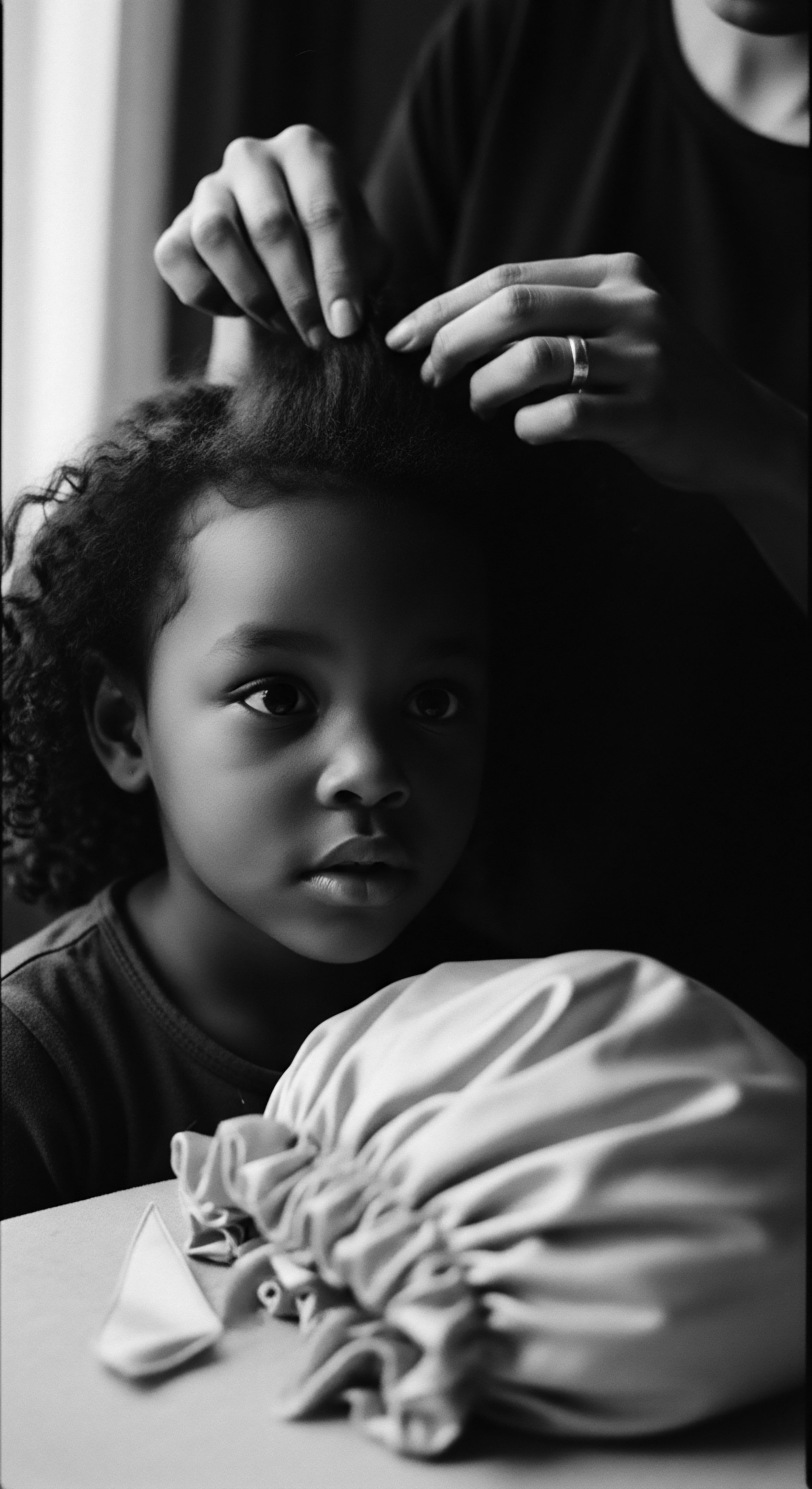
Academic
At an advanced academic level, the definition of Indigenous Hair Practices transcends simple description, becoming a profound meditation on their biological, anthropological, historical, and psychological significance within the context of Textured Hair Heritage. This sophisticated understanding recognizes Indigenous Hair Practices as complex systems of knowledge, ritual, and material culture that have shaped, and continue to shape, the very experience of Black and mixed-race hair. The elucidation of this concept requires an expert lens, discerning the intricate interplay between elemental hair biology, ancient wisdom, and the enduring human spirit of cultural preservation.
Indigenous Hair Practices, from this perspective, represent a sophisticated ethnobotanical and ethnomedical tradition. Communities, through generations of empirical observation, developed a nuanced understanding of their local flora’s properties and their application to hair and scalp health. The use of specific plants like Shea Butter (Vitellaria paradoxa), Baobab Oil (Adansonia digitata), Moringa Oil (Moringa oleifera), and African Black Soap (derived from plantain skins and cocoa pods) was not arbitrary.
These ingredients were selected for their specific moisturizing, anti-inflammatory, antimicrobial, and strengthening properties, which modern trichology and cosmetic science increasingly validate. For instance, the high concentration of fatty acids in shea butter provides exceptional emollience, crucial for the unique coiling patterns of textured hair that naturally limit sebum distribution along the hair shaft.
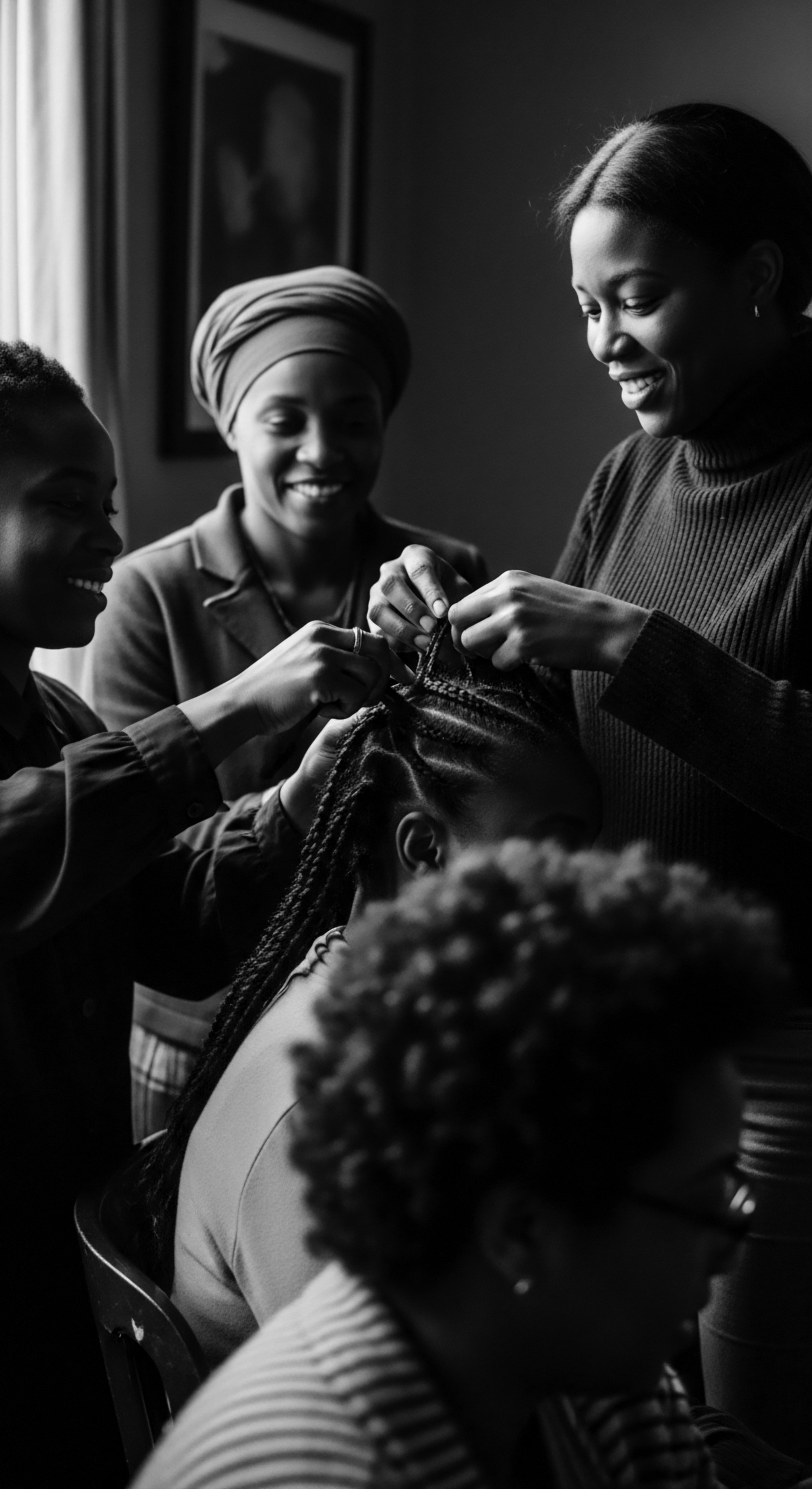
Biological and Anthropological Dimensions
The biological architecture of textured hair, characterized by its elliptical follicle shape and tight helical coiling, presents specific needs that ancestral practices addressed with remarkable efficacy. This hair type is prone to dryness and breakage due to its structural characteristics, which make it challenging for natural oils to travel down the hair shaft. Indigenous solutions, such as the consistent application of rich, natural oils and butters, provided external lubrication and sealing properties. This deep understanding of hair’s intrinsic properties, often without formal scientific frameworks, highlights the empirical brilliance of ancestral knowledge systems.
Anthropologically, Indigenous Hair Practices serve as a powerful marker of social cohesion and cultural resilience. In many pre-colonial African societies, hairstyles functioned as a non-verbal language, communicating complex social codes and individual narratives. Lori Tharps, a professor of journalism and co-author of Hair Story ❉ Untangling the Roots of Black Hair in America, emphasizes that specific tribal and familial styles conveyed identity.
This intricate system of communication was systematically attacked during the transatlantic slave trade and subsequent colonial periods, where the forced shaving of heads aimed to strip enslaved Africans of their identity and cultural ties. Yet, the very act of secretly maintaining or re-establishing these practices became a profound act of defiance and cultural preservation.
Indigenous Hair Practices are complex systems of ethnobotanical wisdom, cultural resilience, and profound identity affirmation, continuously validated by scientific inquiry and embodied in the unique biology of textured hair.
A powerful historical example that illuminates the enduring connection to textured hair heritage and ancestral practices is the role of Cornrows in Acts of Resistance during Slavery. While often seen merely as a protective style today, historical accounts from the African diaspora, particularly in regions like Colombia, document how cornrows were used as a covert means of communication and escape. Enslaved women would braid intricate patterns into their hair that served as maps, delineating escape routes through plantations and forests. These patterns could also conceal rice seeds or other small items, providing sustenance for those fleeing bondage.
This remarkable ingenuity demonstrates how a seemingly aesthetic practice became a vital tool for survival and liberation, embodying profound ancestral wisdom and resilience. This specific historical context elevates cornrows from a mere hairstyle to a symbol of strategic intelligence and unwavering spirit in the face of unimaginable oppression. (Byrd & Tharps, 2001)
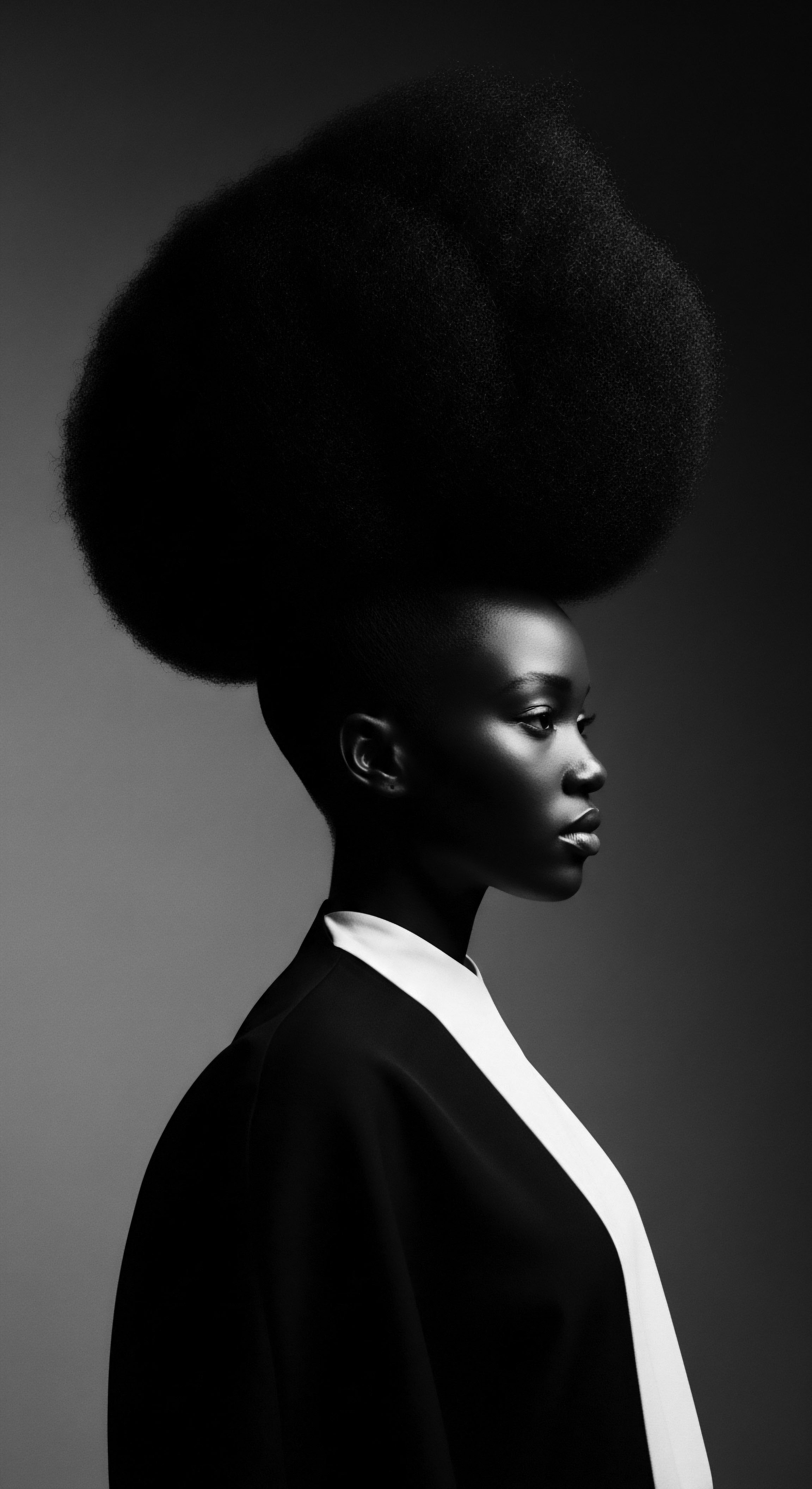
Interplay of Historical, Psychological, and Social Factors
The historical trajectory of Indigenous Hair Practices within Black and mixed-race communities is a compelling study in cultural survival and adaptation. The imposition of Eurocentric beauty standards during colonialism and slavery created a profound psychological burden, leading to the stigmatization of natural textured hair. This gave rise to the harmful concept of “good hair” versus “bad hair,” where straighter textures were often preferred due to their perceived proximity to European ideals. The pursuit of straightened hair, often through damaging chemical relaxers and hot combs, became a means of perceived assimilation and economic opportunity.
However, the mid-20th century witnessed a powerful resurgence with the Natural Hair Movement, particularly during the Civil Rights Era. The Afro hairstyle, for instance, became a potent symbol of Black pride, unity, and resistance against oppressive beauty norms. This movement was not merely a shift in aesthetics; it was a profound socio-political statement, a reclamation of Indigenous Hair Practices and a celebration of ancestral beauty. It underscored the psychological liberation that accompanies the affirmation of one’s authentic heritage.
The contemporary landscape of textured hair care continues this dialogue between ancient wisdom and modern understanding. Black-owned haircare brands are increasingly blending traditional ingredients like shea butter and baobab oil with scientific advancements, creating products that cater specifically to the unique needs of textured hair while honoring their cultural origins. This fusion represents a sophisticated evolution of Indigenous Hair Practices, where scientific validation complements and enhances long-standing ancestral knowledge.
The meaning of Indigenous Hair Practices, in this advanced context, is a dynamic and evolving one. It encompasses the biological reality of textured hair, the anthropological significance of communal rituals, the historical trauma and resilience of diasporic communities, and the psychological imperative of self-acceptance and cultural pride. It is a living heritage, continuously reinterpreted and reaffirmed, providing a powerful lens through which to understand the profound connection between hair, identity, and the enduring legacy of ancestral wisdom.
- Ancestral Hair as Communication ❉ Pre-colonial African societies utilized diverse hairstyles to convey intricate social information, including age, marital status, and tribal affiliation.
- Ethnobotanical Wisdom ❉ Traditional hair care involved sophisticated knowledge of indigenous plants and natural resources, like shea butter and moringa oil, for their therapeutic and cosmetic properties.
- Resistance and Resilience ❉ During slavery, cornrows were ingeniously used to create maps for escape and conceal sustenance, embodying a powerful form of covert resistance and cultural preservation.
- Psychological Reclamation ❉ The Natural Hair Movement in the 20th century marked a critical shift, transforming textured hair from a source of stigma into a symbol of Black pride and identity affirmation.
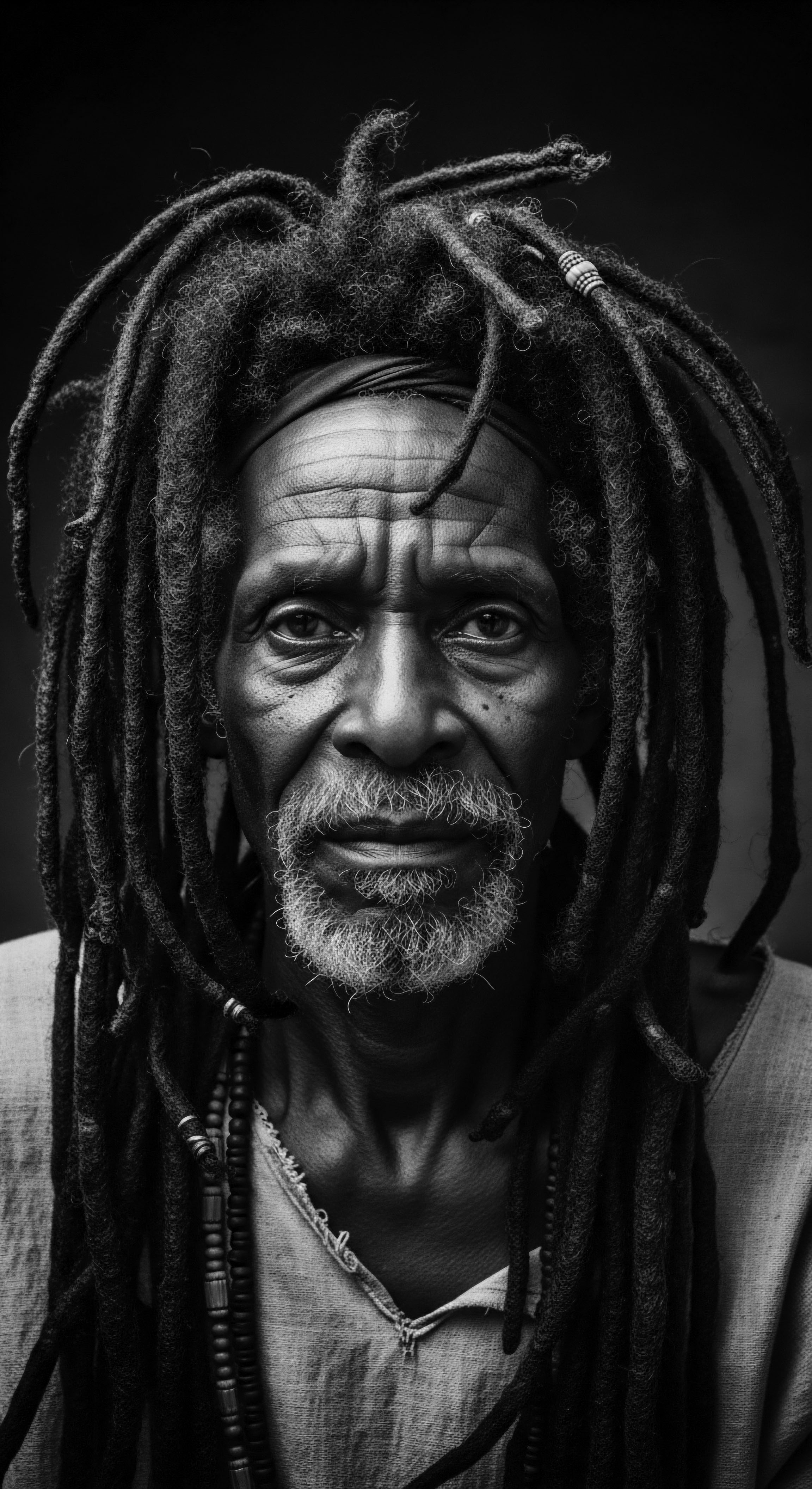
Reflection on the Heritage of Indigenous Hair Practices
As we conclude our exploration of Indigenous Hair Practices, a profound sense of continuity and enduring spirit settles upon us. The journey through ancient African kingdoms, the harrowing passages of the transatlantic slave trade, and the vibrant resurgences of self-affirmation across the diaspora reveals a singular truth ❉ hair, particularly textured hair, is far more than mere keratin strands. It is a living testament to heritage, a repository of stories, and a silent, yet powerful, declaration of identity.
The ‘Soul of a Strand’ ethos, which guides Roothea’s mission, finds its deepest resonance within these practices. Each coil, each kink, each carefully crafted braid holds the memory of generations, a wisdom whispered from ancestor to descendant, connecting us to a lineage of resilience and beauty.
The wisdom embedded in Indigenous Hair Practices speaks to a holistic approach to wellbeing, where the care of one’s crown is inseparable from the health of one’s spirit and community. It is a reminder that true beauty arises not from conformity to external ideals, but from an authentic connection to one’s roots and an honoring of one’s unique biological and cultural inheritance. The deliberate choices made by our ancestors, from the selection of nourishing botanicals to the communal rituals of styling, were acts of reverence, nurturing not just the hair, but the very essence of being. This heritage is not a static relic of the past; it is a dynamic, evolving force that continues to inspire and inform contemporary practices, inviting us to look inward and backward for guidance as we shape the future of textured hair care.
The path ahead for textured hair heritage is one of continued celebration and conscious preservation. It involves recognizing the scientific validity often inherent in traditional methods, advocating for respectful engagement with cultural practices, and fostering environments where every strand is cherished for its inherent beauty and its profound ancestral story. In this living library, Indigenous Hair Practices stand as a luminous entry, reminding us that the deepest truths about ourselves and our hair are often found in the echoes of the past, guiding us towards a future of unbound self-expression and collective pride.

References
- Byrd, A. & Tharps, L. (2001). Hair Story ❉ Untangling the Roots of Black Hair in America. St. Martin’s Press.
- Akanmori, A. (2015). The Cultural Significance of Hair in African Societies. University of Ghana.
- Botchway, K. (2018). African Hairstyles ❉ A Cultural and Historical Perspective. Accra University Press.
- Essel, M. (2023). Hair as Identity ❉ Exploring African Hair Culture. Kwesi Press.
- Tharps, L. (2008). African-American Hair ❉ A Historical Overview. Temple University Press.
- Thompson, S. (2009). Black Women and Hair ❉ A Cultural History. University of Illinois Press.
- Johnson, K. & Bankhead, A. (2014). The Social and Political History of Black Hair. Routledge.
- Yerima, T. (2017). The Imperial Aesthetic ❉ Hair and Colonialism. Journal of Postcolonial Studies.
- Dove, C. & Powers, J. (2018). Black Hair in the Civil Rights Movement. Journal of Black Studies.
- Bascom, W. R. (1969). Ifa Divination ❉ Communication Between Gods and Men in West Africa. Indiana University Press.
- Ogbu, J. U. (1978). African Cultural Practices and Their Persistence in the Diaspora. University of California Press.
- Amadiume, I. (1987). Male Daughters, Female Husbands ❉ Gender and Sex in an African Society. Zed Books.
- Okeke, C. (1995). African Traditional Hair Care ❉ An Ethnobotanical Study. University of Nigeria Press.
- Wade, L. (2007). Hair and Identity ❉ A Sociological Perspective. NYU Press.
